Pandacity Motorsport Endurance League: 2025 Regulations
This ruleset, inspired by the 2025 IMSA WeatherTech SportsCar Championship regulations, governs the Pandacity Motorsport iRacing endurance league featuring multiclass competition between GTP and GT3 vehicles. The goal is to provide a framework for fair, competitive, and enjoyable racing, emphasizing endurance strategy and respectful competition.
1. Classes and Eligible Cars
- Grand Touring Prototype (GTP): This class will feature the current generation of GTP cars available on the iRacing service. All cars within this class will compete on a level playing field as determined by iRacing's Balance of Performance (BoP). There are no subdivisions or driver categorization within the GTP class.
- GT3: This class will feature GT3 cars available on the iRacing service. These cars will compete under iRacing's GT3 BoP. This class serves as the equivalent of IMSA's GTD class for this league. There are no subdivisions or driver categorization within the GT3 class.
2. General Sporting Regulations
- Spirit of the Regulations: All competitors are expected to compete in a sportsmanlike manner, respecting their fellow competitors and the officials of the league. Dangerous or overly aggressive driving will not be tolerated.
- League Officials: Officiating for the league, including the interpretation and enforcement of these regulations, management of race sessions, and levying of penalties, will be conducted by designated outside resources. Their decisions are final.
- iRacing Sporting Code: The iRacing Sporting Code is the baseline for all on-track conduct. These Pandacity Motorsport regulations supplement the iRacing Sporting Code. In case of conflict, these regulations will generally take precedence, particularly concerning multiclass interaction, pit stop procedures, and penalty guidelines specific to this league.
- Communication: All official communication from the league will be made through designated channels (e.g., Discord server, league forums). Competitors are responsible for staying informed of any announcements or rule updates.
3. Event Format
- Practice Sessions: Each event will include practice sessions prior to qualifying and the race. The duration of these sessions will be announced in advance.
- Qualifying:
Qualifying will be conducted in two separate sessions to manage traffic:
- Session 1: GT3 (12 minutes): Only GT3 cars will be allowed on track during this 12-minute session. Competitors should aim to set their fastest lap time during this window.
- Transition Period (1 minute): Following the GT3 session, there will be a 1-minute transition period. GT3 cars should complete their current lap and return to the pit lane. GTP cars may use this time to line up at the pit exit.
- Session 2: GTP (12 minutes): Only GTP cars will be allowed on track for their 12-minute qualifying session. GTP cars may exit the pits once their session time begins (when the 1-minute transition period is over and the 12-minute GTP timer starts).
Starting grids will be set based on the fastest lap time achieved within each class's dedicated qualifying session. GTP cars will start ahead of GT3 cars on the grid.
- Race:
- Race lengths will be endurance format, with durations announced prior to each event.
- Starts will typically be rolling starts, with class separation maintained. The GTP class will lead the field, followed by the GT3 class.
- Positions gained before the green flag is shown will be subject to penalty.
- Lapped traffic must be handled safely and predictably by both the lapping and the lapped cars. GTP cars must pass GT3 cars cleanly, and GT3 cars should be aware of faster GTP traffic and facilitate passes when safe to do so without impeding their own race significantly.
- Mandatory Pit Stops/Driver Swaps: For endurance races, mandatory pit stops and driver swaps will be required. The minimum and maximum driver stint times, as well as the requirements for driver swaps, will be clearly communicated for each event. The number of mandatory driver swaps will also be specified.
- Fueling: Refueling will be permitted during pit stops. Fuel limits per stint or per race will adhere to iRacing's settings and potentially adjusted for BoP if necessary.
4. Pit Stop Regulations
- Pit Lane Speed Limit: Adherence to the iRacing pit lane speed limit is mandatory at all times. Exceeding the pit lane speed limit will result in an iRacing penalty.
- Pit Stall Entry and Exit: Competitors must enter and exit their assigned pit stall safely and without impeding other competitors in the pit lane.
- Driver Swaps:
- Driver swaps must occur within the designated pit box.
- The car must be stationary during a driver swap.
- All iRacing procedures for driver swaps must be followed correctly. Failure to do so may result in penalties.
- Refueling and Tire Changes: Refueling and tire changes can only be performed when the car is stationary in its pit box.
- Serving Penalties: Any penalties incurred during the race must be served according to the instructions of the league officials or iRacing's automated penalty system.
5. Full Course Yellow (FCY) Procedures
- Deployment: Full Course Yellow periods will be automatically implemented by the iRacing simulation in response to significant on-track incidents.
- Procedure:
- Upon the activation of a Full Course Yellow, competitors must immediately reduce speed and follow the instructions provided by the iRacing simulation (e.g., Slow Down warnings, formation procedures).
- Overtaking is strictly prohibited under Full Course Yellow conditions, except as permitted by the iRacing simulation (e.g., cars being waved around).
- Pit entry and exit under FCY conditions will be governed by iRacing's automated system. Competitors must adhere to the pit status indicated by the simulation.
- Restart: The race will be restarted according to iRacing's automated restart procedures following a Full Course Yellow period.
6. Driving Standards and Overtaking Rules
- General Conduct: Competitors are expected to race cleanly and respectfully at all times. This includes maintaining predictable lines, avoiding sudden or erratic changes of direction, and leaving sufficient room for other competitors when racing side-by-side.
- Predictability: Maintaining a predictable line and speed is paramount, especially when interacting with cars of a different class. Avoid sudden braking, lifting, or changes in direction that could catch other drivers out.
- Responsibility for Overtaking: The primary responsibility for completing a safe and clean overtake lies with the overtaking driver. They must ensure that their maneuver does not result in contact or force the overtaken driver off the track. The overtaking driver should also be aware of the capabilities and racing line of the car being overtaken.
- Defending: A defending driver is permitted to make one move to defend their position on a straight. This move should be made early and clearly. However, they must not make erratic or delayed movements that impede the overtaking car once the overtaking car has a significant overlap. Blocking, defined as actively reacting to the overtaking car's move rather than holding a consistent line, is prohibited. Drivers must also leave at least one car width of space when the overtaking car has a significant overlap alongside them, particularly approaching and through corners.
- Overlap: An overtaking car is generally considered to have a right to racing room when they have a significant overlap alongside the car being overtaken before the turn-in point of a corner. The overtaken car must then leave at least one car width of space.
- Definition of Significant Overlap: Significant overlap is achieved when the front axle of the overtaking car is at least alongside the rear axle of the car being overtaken. This must be established before the turn-in point of a corner for the overtaking car to have a right to racing room in that corner. On straights, any amount of overlap generally entitles a car to racing room alongside.
- Multiclass Overtaking (GTP and GT3):
- Faster Class (GTP) Overtaking Slower Class (GT3):
- GTP drivers must exercise patience and choose a safe opportunity to pass GT3 cars. They have the performance advantage and it is their responsibility to make the pass cleanly.
- Overtaking under heavy braking into a corner should be done with extreme caution. A GTP driver attempting such a pass must ensure they have significant overlap before the braking zone and can complete the maneuver without compromising the GT3 car's line or causing contact.
- GTP drivers should be aware that GT3 cars may have different braking points and cornering speeds.
- While not mandatory, flashing headlights can be used by GTP cars to indicate their presence, but they should not assume the GT3 car will immediately move aside.
- Slower Class (GT3) being Overtaken by Faster Class (GTP):
- GT3 drivers should be acutely aware of faster GTP traffic approaching by regularly checking their mirrors, relative box, and listening for audible cues.
- The primary responsibility of the GT3 driver is to maintain a predictable line. They are not required to move off the racing line to let a GTP car by, but erratic movements, sudden braking, or actively impeding a faster car is prohibited and will be penalized.
- GT3 drivers are strongly encouraged to facilitate safe passes for GTP cars when it is safe and does not significantly compromise their own race or battle with other GT3 cars. This can be achieved by holding a consistent line, potentially slightly off the optimal line on a straight, or being predictable in braking zones. Avoid sudden defensive moves.
- Cooperation is key. Both drivers should work together to ensure a safe and efficient pass with minimum time lost for both cars.
- Blue Flags: Blue flags in this multiclass league serve as an advisory signal to a slower car that a faster car is approaching and is in a position to lap them. A blue flag does not require the slower car to immediately pull off the racing line or lose significant time. The onus remains on the faster car to make a safe pass. However, the blue-flagged driver is expected to be aware and predictable to facilitate a safe overtake at the earliest reasonable opportunity without compromising their own race excessively. Ignoring blue flags persistently while a faster car is clearly trying to lap you may be considered impeding and subject to review.
- Overtaking within the Same Class: Standard racing rules apply. Competitors may race for position, but contact should be avoided at all costs. Drivers must leave racing room when cars are alongside each other, especially through corners, based on the "significant overlap" definition.
- Prohibited Maneuvers:
- Dive-bombing: Attempting to overtake from a significant distance back under heavy braking, resulting in unavoidable contact or forcing the overtaken car off track.
- Blocking: Making reactive movements to prevent an overtake after the overtaking car has committed to a line and has significant overlap.
- Causing Avoidable Contact: Any contact that is deemed avoidable by the league officials will be subject to penalty. Competitors are expected to take reasonable action to avoid contact.
- Weaving: Making multiple changes of direction on a straight to impede an overtaking car.
- Retaliatory Driving: Engaging in any form of retaliation against another competitor on track.
7. Incident Review and Penalties
- Incident Reporting: Competitors may report on-track incidents for review by league officials. A clear procedure for submitting incident reports will be provided.
- Review Process: League officials will review reported incidents and apply penalties as deemed appropriate based on the severity of the offense and these regulations.
- Penalties: Penalties may include, but are not limited to:
- Warning
- Drive-through penalty (may be automatically assessed by iRacing)
- Stop-and-go penalty (may be automatically assessed by iRacing)
- Time penalty added to race finish time
- Disqualification from the event
- Grid penalty for the next event
- Driving Standards: Competitors are expected to maintain a high standard of driving. Incidents resulting from reckless driving, avoidable contact, or failure to respect multiclass dynamics and overtaking rules will be penalized.
8. Balance of Performance (BoP)
- The league will primarily utilize iRacing's built-in BoP for the GTP and GT3 classes.
- League officials reserve the right to make minor adjustments to the BoP for specific events if deemed necessary to promote closer racing, though this will be a rare occurrence and communicated clearly to all competitors.
9. Technical Regulations (iRacing Specific)
- Car Specifications: Only the specified GTP and GT3 cars available on iRacing are eligible for competition.
- Setups: Competitors are free to develop their own car setups within the parameters allowed by iRacing.
- Assists: The use of iRacing assists will be subject to the league's decision and communicated prior to the season or individual events. Typically, realistic assists for the car class are permitted.
10. Protests and Appeals
- Protests: Competitors may protest decisions made by league officials. A formal protest procedure will be outlined by the league.
- Appeals: A process for appealing protest outcomes may be available, details of which will be provided by the league.
11. Amendments to Regulations
- These regulations may be amended or updated by league officials at any time. Any changes will be communicated clearly to all competitors in advance of an event.







